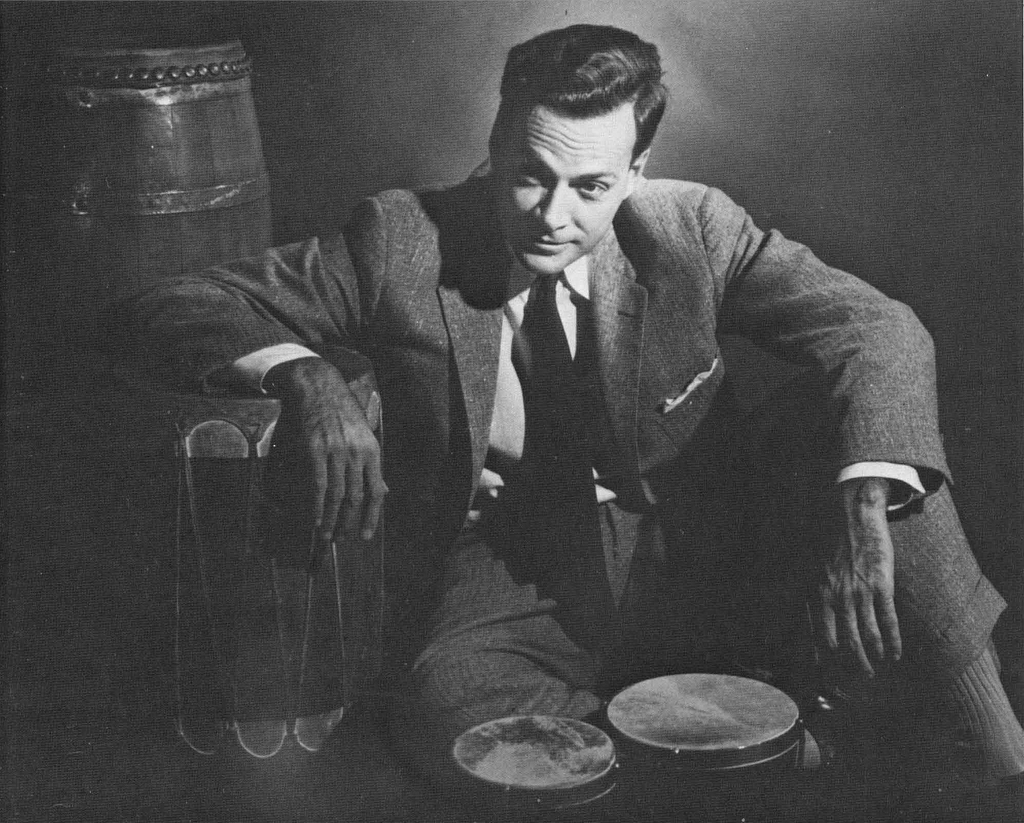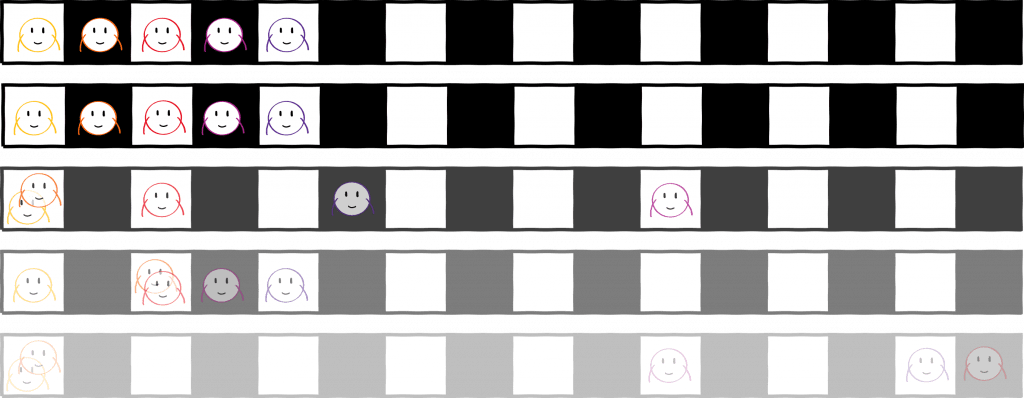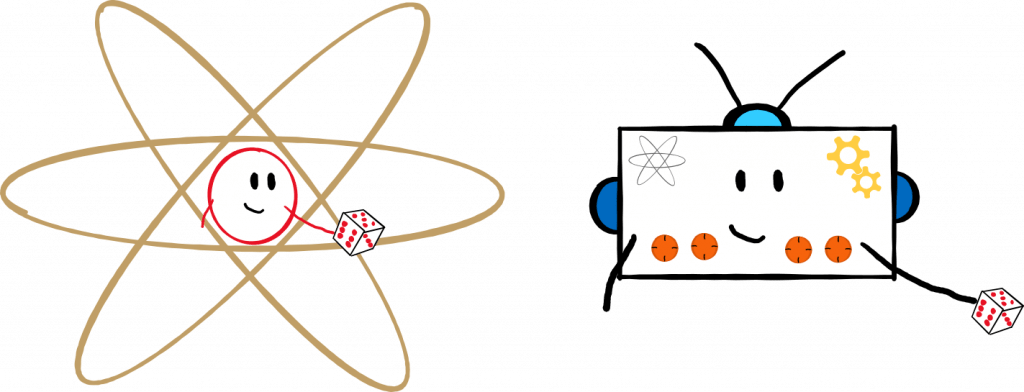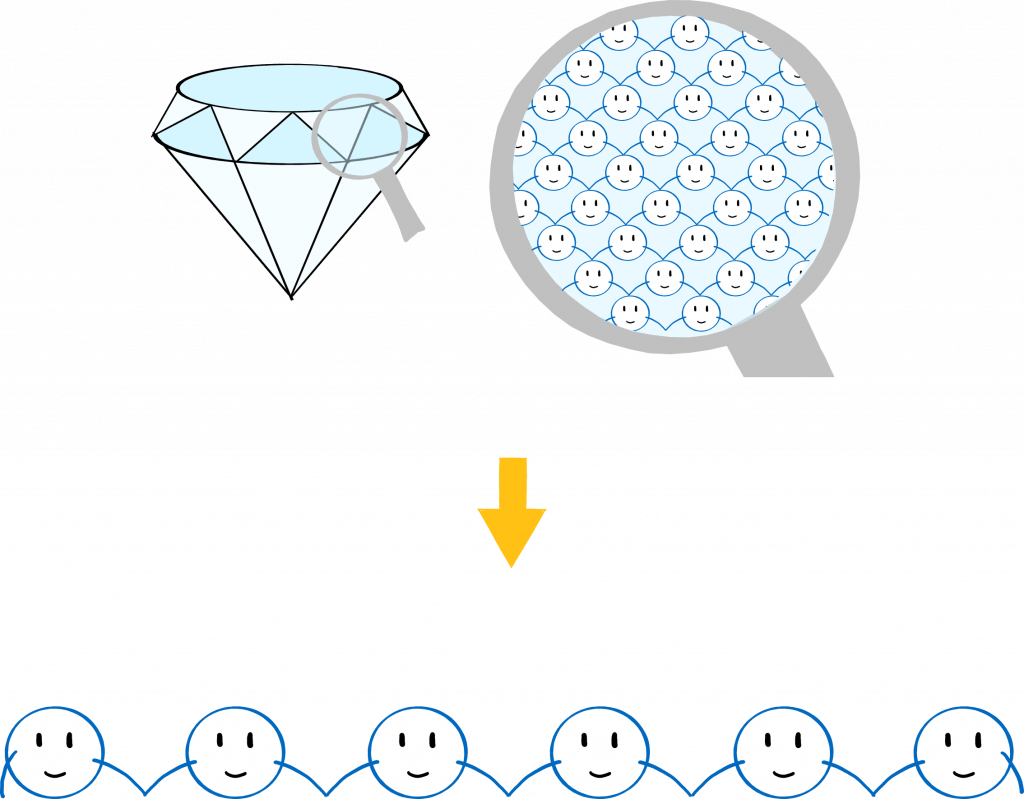It may surprise you: quantum technology is more than just quantum computing. I like to get upset that quantum technology is often equated with quantum computing because there are many ways to improve technology using quantum physics.
Here, I want to talk about quantum computing’s big, modest sister: quantum simulation. They are closely related, and yet the basic idea is different. I have researched quantum simulators myself, so I may be slightly biased – but I find them highly underrated.
Simulating physics with computers
The idea of the quantum simulator goes back to U.S. physicist Richard P. Feynman – a pop star of physics (who, by the way, is a very remarkable bongo player). He gave a lecture at the California Institute of Technology on May 7, 1982, titled “Simulating Physics with Computers,” which is considered to be the cause that triggered the second quantum revolution.

Secret, secret, close the doors!
Feynman has a very special style, which made his lectures and books famous not only among physicists. His popular science books on “easy pieces” and quantum electrodynamics – really tough stuff – are bestsellers. His style is also evident in his lecture, with tidbits like:
“On the program it says this is a keynote speech – and I don’t know
what a keynote speech is.”
“Might I say immediately, so that you know where I really intend to go, that we always have had (secret, secret, close the doors!) we always have had a great deal of difficulty in understanding the world view that quantum mechanics represents.”
He talked about the problem of simulating physics with computers. It wasn’t about computing power, CPUs, or supercomputers, but whether it is even possible to do exactly the same thing with a computer that nature does.
Quantum physics is probabilistic
There is one major problem that Feynman – and the entire physics community – must address if they want to simulate quantum physics problems on computers.
Classical physics behaves predictably, or: deterministically. This means: if I know my system exactly right now, for example, I know where my ball is and how fast it is, I can in principle calculate exactly where it will be at any time in the future.
“In principle” means: if we take it very precisely, I have to know all the parameters of the entire universe: The air pressure, the temperature, the speed, and wing strength of the bird in the sky, the weight of the bag of rice in China, … because all of these influence my ball now or in the future. But if I were omniscient right now, then – according to classical physics – I could calculate the future of the entire universe.
But since the discovery of quantum physics, we know that this is not true. Deep down, the world obeys probabilities: It is probabilistic. The decay of a radioactive atom can only be predicted with a certain probability. We can determine the position of an electron only with a certain probability, or fix it to a certain range of space. Even if I were omniscient, I could not tell when an atom will decay.
Simulating or imitating time?
Feynman raises some intriguing points in his speech about our understanding of how computers work. He asks: how do we simulate time?
Think of a computer game, for example, simulating a world in which time appears to pass. Does the computer really simulate time? Actually, the computer just goes from one state to the next: It shows us first one image and then another. This gives us the feeling that time has passed in the computer game. But the computer doesn’t actually simulate time at all – it just imitates it.
Why computers do not like probabilities
The probabilistic nature of quantum physics has serious consequences for computer simulations of physical processes. Let’s assume I want to describe quite a lot of particles, for example, 5 (you think that’s not “quite a lot”? Wait for it). I look at these 5 particles on a board with 10 squares.
In classical physics: Easy. I put the particles in their starting position and calculate step by step what happens, for example, when I push one particle.

In quantum physics, it looks different. My 5 particles can be on any of the 10 squares with a certain probability. The first particle on the first square, or on the second, or on the fourth; the second next to the first, on the third, or on the seventh; and so on.
What do you think: How many constellations are there to distribute the 5 particles on the 10 fields?

10,000! And each of these 10,000 constellations occurs with a certain probability, which we have to consider and then calculate analogous to the classical case. Already with only 5 particles, the simulation explodes.
A small expert hint: Of course, I can also start with a special initial state in quantum physics. Quickly, however, my particles will “smear” over the grid. For example, a particle that started on field 5 will be found after a very short time with a certain probability on fields 4, 5, or 6. Then we have to consider all three options in the calculation. This happens for all 5 particles and the number of constellations (we call this: basis states) we have to consider increases exponentially – from 1 to 10,000.
How can we simulate quantum physics anyway?
The explosion of possibilities that must be included in the calculation is why it is so difficult for computers to simulate quantum physics. It is only possible if we consider very small systems: Single or very few particles (remember: 5 was a lot!). Therefore, it is extremely difficult to use computers to simulate the evolution of large molecules, as would be useful in medicine for drug discovery, for example.

Feynman’s key question was: how can we still simulate quantum physics? His idea: Instead of laboriously calculating all the options, why don’t we instead take a machine that does the same thing as nature with the same probability? This machine simulates nature and we can investigate the process.
Can that work? Feynman saw two possibilities.
Possibility 1: Simulate quantum mechanics with classical computers
If we want to use a classical computer to simulate a quantum system, the key question is: Can a classical computer ever do the same thing as a quantum system with the same probability? Can a computer reproduce the same probabilities that a quantum system would spit out?
Funnily enough, Feynman devotes ten and a half pages (in the transcript of his speech) to this question, although the plain answer is: no. After dealing with this answer in the first paragraph, he devotes ten pages to explaining why this is so.
I’ll be brief: quantum mechanics is not classical. It deeply contradicts the principles of classical physics. This becomes especially clear in experiments with entangled particles, as demonstrated by the Einstein-Podolsky-Rosen paradox (the full explanation is here). The EPR paradox illustrates that quantum physics is non-local or non-real, and one consequence is that “probabilities” can take negative values. No classical device can perform a stochastic process with negative probabilities because they have no meaning in the classical world.
Possibility 2: Simulate quantum mechanics with quantum computers
The second possibility, which Feynman himself dismissed as a side note, was the one that would turn technology on its head. He wondered: can we build a new kind of computer – a “quantum computer” – that is itself made of quantum particles? (Disclaimer: I disentangle the terms quantum simulator and quantum computer below)
Why teach mice to fly?
Feynman’s idea was brilliant. Why bother teaching a classical computer the rules of quantum physics? It has to deal with probabilities and other quantum rules that are unfamiliar to it. Why don’t we build the computer itself from quantum particles that behave all by themselves according to the rules of quantum physics?


A comparison: Imagine you want to understand how a bat flies through a maze. What would you do: Catch a mouse, build her wings, glue them on, teach her to fly, put her in the maze, study her trajectory, … or would you just observe a bat?
How does quantum simulation work?
The essential trick of a quantum simulator is that we don’t just use any quantum particles. Rather, we design the quantum simulator in such a way that the quantum particles inherently behave exactly like the system we want to investigate.
The Polly simulator
Let’s take the bat in the maze again as an example: a bat is much too wild and fast for me, and I cannot follow its path through the maze. Instead, I put my tame budgie Polly into the maze. I know and understand Polly very well, Polly flies slowly and quietly, and is easily visible because of his blue color. Besides, I can control Polly: I can use grains to make some paths in the maze more attractive than others, or I can make Polly start from a very specific point.

With Polly’s help, I can now learn how flying animals move through the maze, what influence the starting point has, which branches are more important than others, and possibly even how to get the animal to leave the maze at a very specific point.
I can now transfer the knowledge I have gained from these experiments to the bat. It is important to make the correct assignment: the budgie becomes a bat, the grains become pieces of fruit, and the nesting box becomes the tree hollow.
With the help of the Polly simulator, I learned enough about the bat problem to not only understand and predict the bat’s flight through the maze, but ideally to control it.
The quantum simulator
We do exactly the same thing in quantum simulation. We simulate a large, complicated, unknown quantum system (the bat) using a smaller, simpler, known quantum system (the budgie) to better understand it.
Often, for example, solids that in reality consist of millions and millions of atoms are recreated using just a few atoms. This quantum simulator for solids is not a solid in the strict sense, but it mimics the essential properties of a solid that we want to explore, for example, its magnetic properties.

We can specifically change this property in the quantum simulator: For example, we can flip the magnetization at the push of a button or create and explore exotic magnetic states. This allows us to explore complex systems and learn more about them.
The universal quantum simulator
One drawback of quantum simulators is: this quantum simulator only works for my one problem. Polly can only simulate the flight of a bat, but rabbits move through a maze in a completely different way. If I built a quantum simulator to study the magnetic behavior of solids, it won’t help me if I want to learn about the property of superconductivity of solids.
Feynman wondered in his speech if there was a quantum simulator that could simulate everything. This he called the universal quantum simulator. He even began to formulate this idea, using spins, or you could say bits.

He used a formulation that, on the one hand, is simply very familiar to quantum physicists (spins), but on the other hand, is very closely related to the way classical computers work (bits): Both boil down to a switch – up or down. This machine is nothing else than a quantum computer, the quantum counterpart of the classical computer.
A small quantum dictionary
- A quantum simulator is a controlled, normally composite quantum system that mimics/simulates a more complex quantum system.
- A universal quantum simulator is a machine (i.e., a controlled, normally composite quantum system) that can mimic/simulate all conceivable quantum systems.
- A quantum computer is a quantum simulator composed of quantum bits. It is the quantum equivalent of the classical computer. When a quantum computer works perfectly, it is a universal quantum simulator.
- A universal quantum computer is a synonym for a universal quantum simulator.
Quantum simulators vs. quantum computers
Quantum simulators have a distinct advantage and disadvantage when compared to quantum computers. The advantage is that quantum simulators are easier to construct. It is much easier to design a simulator for a specific problem and use it to answer all my questions about that problem, than it is to build a super machine that does it for every conceivable problem. There are already many quantum simulators that are being used extensively in research to answer many questions. The disadvantage is that this quantum simulator then really only works for this one problem.
In principle, a quantum computer can simulate any conceivable quantum system. The problem: Current quantum computers are very error-prone (more on this here) and therefore often still inferior to quantum simulators when a concrete problem is to be solved. If we had an ideal (i.e., error-free) quantum computer, this would be a universal quantum simulator and this would theoretically make all other quantum simulators obsolete.
That quantum simulators or quantum computers are necessary to adequately simulate the quantum world was known to Feynman 40 years ago. He was not happy with the classical approaches to simulating quantum theory and ended his talk with one of my favorite sayings about quantum physics:
Nature isn’t classical, dammit, and if you want to make a simulation of nature, you’d better make it quantum mechanical, and by golly it’s a wonderful problem, because it doesn’t look so easy.
Richard P. Feynman
In this article, I talked about the quantum simulator, which is just one of many quantum technologies. You might also be interested in the article on the second quantum revolution or quantum computing.
Do you like what you read? Then subscribe to my blog and never miss a new post, or, if you like, you can buy me a coffee here!




